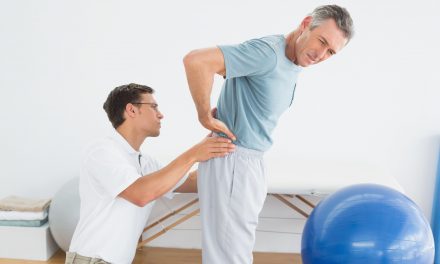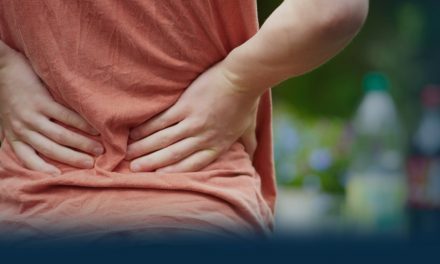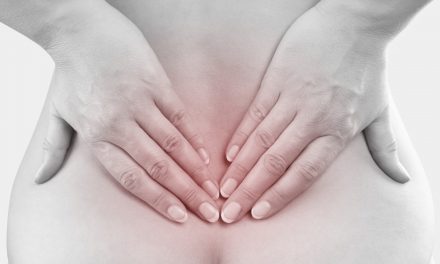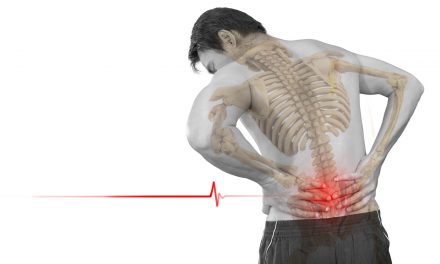Many a time in my days at the clinic I’ve seen doctors recommending specific lower back pain exercise to patients to alleviate their condition. But of course it is imperative to adhere to certain conditions and specifications that are pertinent to individual cases. Any exercise that is performed without professional guidance or information can adversely affect the condition.
 In fact even sitting postures have an impact. Poor sitting posture is one of the most likely causes of low back pain. When you sit for extended periods, the muscles, tendons and discs in the low back are exerted. This excessive strain can induce low back pain. Also, if you sit in a manner where your spinal column gets bent or is subjected to undue pressure it can lead to or increase back pain.
In fact even sitting postures have an impact. Poor sitting posture is one of the most likely causes of low back pain. When you sit for extended periods, the muscles, tendons and discs in the low back are exerted. This excessive strain can induce low back pain. Also, if you sit in a manner where your spinal column gets bent or is subjected to undue pressure it can lead to or increase back pain.
5 bones called vertebrae constitute the low back or lumbar spine. The bones are interspersed with spongy shock absorbers known as discs. Each disc comprises two parts. The inner part is called nucleus pulposes while the exterior part is known as annulus fibrosis. The nucleus pulposes is made of a material which resembles jelly, while the annulus fibrosis is stiffer. The discs can be considered to be mini jelly doughnuts separating the bones. The lumbar spine is attached with many muscles and ligaments.
A side view of the spine allows you to see a forward curve in the lower back. Many people tend to slump forward while sitting. Owing to the slouched position, the forward curve in the lower back reverses. The front side of the disc is overstrained due to the reversal of the forward disc. This also causes the jelly in the middle of the disc to bulge towards the back. When the jelly bulges out far enough, the nerves get cramped and this leads to lower back pain.
Normally the lower back should have a forward curve. While sitting, the curve in the low back should be supported by a small towel roll or lumbar pillow. Proper use of lumbar roll requires you to sit in a chair with your buttocks touching the back of the chair. Then bent forward slightly and put the roll at the small of your back. The roll should be at the level of your beltline. This will come handy in maintaining the proper curve in your lower back.
More often than not, low back pain is caused by poor sitting posture. It causes the discs, muscles and joints in the back to be overstrained. Proper exercise and maintaining proper sitting posture can help do away with low back pain.
Lower Back Pain Exercise
Back pain can be effectively treated by adhering to stretches and exercises. A few safe stretches and exercises can be the way to relief for people with lower back pain. However, medical guidance is required before conforming to any stretching or workout program.
One of the popular stretch programs is extension. You need to lie with your face down on the floor and your legs spread all the way behind you. Raise your head and arch your back. At the same time use your arms to prop up your upper body. Keeping your elbows straight and putting your hands by your side will give more prominence to the stretch.
 The next is rotation stretch where you need to stretch the muscles that rotate your back. You can do this by sitting comfortably and turning your shoulders to one direction and locking in that position. By taking the help of an exercise ball you can perform this stretch comfortably.
The next is rotation stretch where you need to stretch the muscles that rotate your back. You can do this by sitting comfortably and turning your shoulders to one direction and locking in that position. By taking the help of an exercise ball you can perform this stretch comfortably.
You can also do a bending stretch while sitting. You are needed to grasp your hands together and pull them overhead. Your arms should be raised and your upper body should be bent to one side. Maintain the stretch for some time. The action should now be repeated in the opposite direction.
 Heard of hamstring stretches? Hamstring stretches can be carried out in many ways. One simple way is to sit with one leg stretched out and the other folded towards the inner part of the body. You should try and touch the toes of the leg that is stretched out.
Heard of hamstring stretches? Hamstring stretches can be carried out in many ways. One simple way is to sit with one leg stretched out and the other folded towards the inner part of the body. You should try and touch the toes of the leg that is stretched out.
Moving over the stretches, we are now going to talk about exercises. Abdominal crunch is one of the most important exercises that help in strengthening the abdominal muscles. It is recommended that you put up your feet on an exercise ball while working out on the abs because it helps to properly workout the muscles without exerting the back.
Next are planks. Planks can be performed even sans an exercise ball. You are required to lie on your stomach and lift yourself up. For the upkeep of balance rely on your toes and forearms. It is advised that you maintain the rigid posture of your torso.
The aforementioned exercises and stretches are just the tip of the iceberg. There are many more exercises and stretches that can help alleviate back pain.
It is important to understand the significance and accordingly focus on strengthening your leg muscles and knee joints so that your body weight is evenly balanced and does not become a factor resulting in lower back pain. A commonly asked question is, “Can tight leg muscles be responsible for back pain?” The answer is definitely in the affirmative. Tight muscles in the legs not only invoke back pain but can also be responsible for its continual.
The long muscles of the legs are inclusive of the hamstrings, the adductors, the quadriceps, and the hip flexors. When the long muscles become tight and short, the pelvis becomes fixed in place rather than allowing free movement.
This can considerably pressurize the lower back inducing lower back pain.
For instance, short and chronically tight hamstrings can have your pelvis fixed in a posterior rotation. Consequently, the natural lordotic curve of your lumbar spine will be decreased.
Bending forward at the waist will force your lower back to absorb the work of bending. The pivot of rotation will be replaced from your hip joints to the 4th and 5th lumbar vertebra. This causes the lumbars to be burdened with heavy asymmetrical load. The front portion of the intervertebral disc gets pressed while the back portion gets overly stretched.
Some stretches for the hamstrings and other long leg muscles performed twice a day can help in a long way in alleviating lower back pain in many individuals.
Soft tissues around the spine also play an important role in lower back pain. There is a large and complex group of muscles whose function includes supporting the spine, holding the body in an upright position and helping the trunk of the body move, twist and bend in multiple directions.
There are three types of back muscles that help the spine work properly. They are extensor muscles, flexor muscles and oblique muscles. Like any other muscle in the body, back muscles call for adequate exercise to keep up the strength and tone. While the muscles in the thigh like the gluteals are used whenever we walk or climb the stairs, deep back muscles and abdominal muscles are usually not worked out much. Unless muscles are specifically worked out, back muscles and abdominal muscles are likely to grow weak with age.
Lower back pain exercise meant for healing back pain in the lower spine usually concentrate on increasing the strength of the flexor, extensor and oblique muscles to help increase support of the spine. This, in turn, alleviates back pain and at times does away with the need for surgery.
Many doctors have advised those with chronic back pain to stretch their hamstring muscles. Hamstrings are those muscles that are attached to the lower part of the pelvis and run along the back of the leg to the tibia, just underlying the knee joint. Tight hamstrings are likely to pull on the pelvis, thereby inducing a rounding of the lower back. Over a passage of time, this misalignment leads to back pain. Experts suggest that intense stretching of the spine eases the tension on the pelvis and allows the spine to revert to its normal S-shape, thereby doing away with the symptoms of lower back pain.
 A simple and effective way to stretch your hamstrings is to sit with one leg pulled inwards and another leg extended all the way in front of you. You need to bend forward a little till you experience a stretch anywhere along the back of your thigh. Keep your back straight and only go to the extent where you experience a comfortable stretch.
A simple and effective way to stretch your hamstrings is to sit with one leg pulled inwards and another leg extended all the way in front of you. You need to bend forward a little till you experience a stretch anywhere along the back of your thigh. Keep your back straight and only go to the extent where you experience a comfortable stretch.
If you experience pain, take it easy until you feel comfortable. It is best to work out on your hamstrings later in the day or post a brisk jog or walk. It is important to pump a lot of blood through your muscles before you stretch.
Pilates too work wonders for back relief. Pilates rectify the underlying structural imbalances that induce back pain. Problems like pelvic instability, core support, poor posture, lack of body awareness, and muscular imbalances are responsible for failing back health. These are also issues addressed by Pilates method. Pilates helps correct posture, brings about flexibility, increases body awareness and develops core strength.
Many causes can be responsible for back pain and Pilates may not be able to address all of them. If you suffer from chronic back pain, please check with your physician before starting on a Pilates program or indeed any form of lower back pain exercise program.





